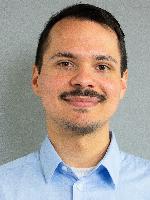Computational Thinking in the Classroom: A How-To
,
Colorado Convention Center, Mile High Ballroom 2A
Presenters


Session description
Purpose & objective
Review CT and how it engages the whole brain
Examine the science from a learning/developmental perspective behind teaching CT
Recognize CT is more than 21st century thinking and problem solving skills, but also teaching students how to think
Determine where and how metacognition and student self-assessment come into play
Outline
Content and activities:
CT Overview [5 mins]
Entry points into CT Problem [20 mins]
introduction to Data [10 mins]
**Finding patterns [15 mins]
**Sifting irrelevant patterns [5 mins]
**Decomposing [10 mins]
**Creating an algorithm [15 mins]
Reflections [10 mins]
The stars above indicate portions where the participants will be doing an activity. Presenters will take a minute or so to set them up, but the majority of that time will be for attendees to engage in the activities outlined on the PPT. The other moments where the presenters are speaking will incorporate attendee participation through Jamboards, live audience feedback, etc.
Supporting research
https://scholar.google.com/citations?view_op=view_citation&hl=en&user=5vGHUj0AAAAJ&citation_for_view=5vGHUj0AAAAJ:u-x6o8ySG0sC
This paper describes a replicable partnership model developed by a graduate school of education that aims to improve elementary student performance in science and math through modifications to pre-service methods courses using computational thinking (CT) content and pedagogy.
ISTE Student Standards
https://www.iste.org/standards/iste-standards-for-students
ISTE Computational Thinking Competencies
https://www.iste.org/standards/iste-standards-for-computational-thinking
Session specifications
Tablet: Android, iOS, Windows
Computational Thinker
- Students break problems into component parts, extract key information, and develop descriptive models to understand complex systems or facilitate problem-solving.
- Students understand how automation works and use algorithmic thinking to develop a sequence of steps to create and test automated solutions.
- Students collect data or identify relevant data sets, use digital tools to analyze them, and represent data in various ways to facilitate problem-solving and decision-making.
 Return
Return Explore and create: Exploratory Creation lab
Explore and create: Exploratory Creation lab  Trips and Tours
Trips and Tours Preregistration Required
Preregistration Required